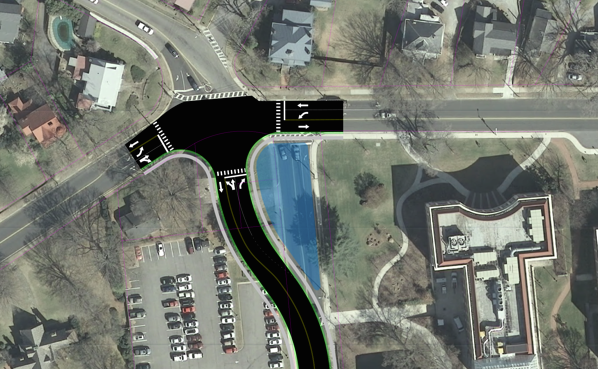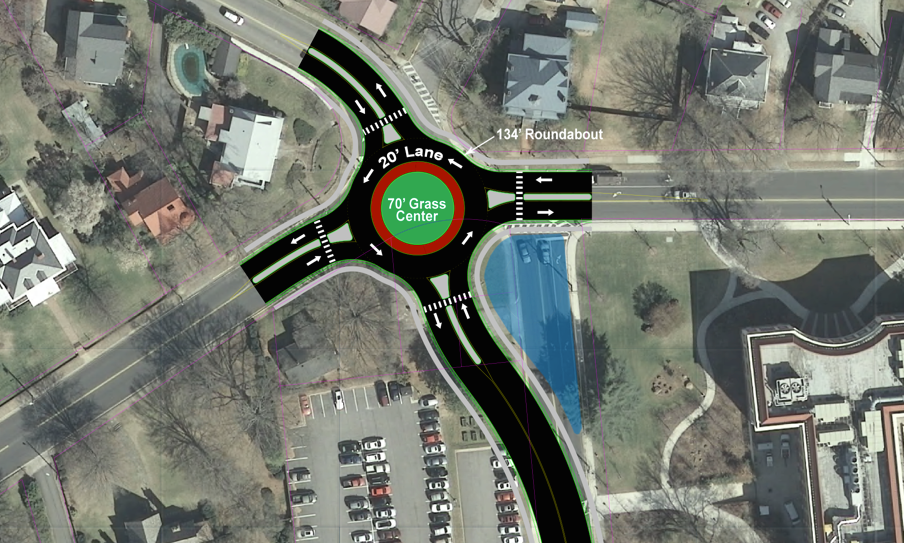Intersection hearing is Oct. 18
Published 10:48 am Tuesday, September 19, 2017
Q: Will a public hearing be held before the Farmville Town Council makes a decision regarding the intersection improvements at Oak, High and Griffin?
Members of the Farmville Town Council unanimously agreed to hold a public hearing Oct. 18 at 7 p.m. to gather comment on the options being considered to improve the intersection at Oak and High streets and Griffin Boulevard.
The decision to hold the hearing came during Wednesday’s town council meeting.
Prior to the hearing will be a community meeting where residents and those interested can view conceptual graphics and speak with project engineers one on one.
In May, engineering firm McCormick Taylor recommended to the town a roundabout be constructed at the intersection at a price tag of $3.8 million.
During the council’s Sept. 6 work session, Farmville Town Manager Gerald Spates said if the town crews performed the work required to realign the intersection, it could possibly be done for around $1 million.
Regarding the community meeting preceding the 7 p.m. public hearing in October, Spates said Wednesday “the public could come in, the engineer will be here, they can ask questions, talk one on one to the engineer (and) ask questions of the engineer about certain aspects of the project. The public hearing would be the time that the people could voice their approval of one or the other options.”
During the public comment portion of the Wednesday meeting, husband and wife Adam and Ann Yoelin, who live in a home atop a knoll at the intersection, again signaled their favorability for a roundabout.
“I read in the paper that the intersection of High and Oak streets will be up for a discussion soon, the realignment,” Ann said, noting she was “100 percent behind the roundabout … I look forward to expressing my opinion on that further at the public hearing.”
Speaking after his wife, Adam, referencing the money that could be saved if town crews realigned the intersection, questioned “how much money can you save by doing a roundabout in town?”
“We’ve never done one,” Spates responded.
“Would you be willing to try?” Yoelin asked. “Oh yeah, we can work that price up,” Spates said. “The reason I came up with that price (for town crews doing the realignment) was I was asked by a resident, and that’s where that figure came from and I reported it … So what you end up with is four options.”
“I would strongly request that you would do a little research and see how much it would cost to do a roundabout,” Adam said. “Could you potentially save 50-75 percent off the (engineer’s) recommendation of a roundabout? Let’s remember, they recommended a roundabout as a solution. It just costs a little more and it takes a little more time. The question is can we do it more efficiently, more cost-effectively, and we also all know … that down the road by keeping the traffic moving, (roundabouts are) more efficient, they’re safer and they’re more cost-effective. They pay for themselves overtime.”
During a May community meeting with project engineers, only one person spoke in disapproval of the construction of a roundabout at the intersection, citing pedestrian safety. Others who spoke indicated their favorability toward a roundabout.
Before Spates offered the option of town crews realigning the intersection, engineers presented three options to council: a roundabout, realigning the intersection or leaving it as is.
An evaluation matrix developed by the firm — presented to the public in May — included stakeholder communication, intersection operation, costs of construction and lifecycle, constructability and vehicular and pedestrian safety.
Council’s unanimous decision to contract with the Glen Allen-based engineering firm comes with a price tag of $44,000 — one that’s being split with Longwood University.
According to the matrix, a proposed roundabout ranked above a realigned intersection and no improvements based on calculated criteria of public comments in favor, level of service operation and construction cost, along with known criteria, including lifecycle cost, maintenance of traffic/constructability, vehicular safety and pedestrian safety.
Factors included in the firm’s recommendation include Virginia Department of Transportation (VDOT) policy, which details benefits regarding right of way, environmental factors, design constraints, safety, operation and lifecycle cost.
Out of the three alternatives, the roundabout ranked highest in public comments in favor, level of service/operation, construction cost, life cycle cost and vehicular safety. Intersection realignment ranked highest only for pedestrian safety.
According to the presentation, the roundabout would cost $662,083 for preliminary engineering, $2,663,636 for construction and $463,638 for right of way and utilities.
A traditional realignment, according the presentation, would cost $2.7 million, including $480,354 for preliminary engineering, $1,801,284 for construction and $416,310 for right of way and utilities.
“VDOT recognizes that roundabouts are frequently able to address the above safety and operational objectives better than other types of intersections in both urban and rural environments and on high-speed and low-speed highways,” the firm’s presentation offered, referencing a VDOT Road Design Manual.
“Therefore, it is VDOT policy that roundabouts be considered when a project includes reconstructing or constructing new intersection(s), signalized or unsignalized. The engineer shall provide an analysis of each intersection to determine if a roundabout is a feasible alternative based on site constraints, including right of way, environmental factors and other design constraints. The advantages and disadvantages of constructing a roundabout shall be documented for each intersection. When the analysis shows that a roundabout is a feasible alternative, it should be considered the department’s preferred alternative due to the proven substantial safety and operational benefits.”
“Can we get the right of way? Yes we can,” William Winston, a senior traffic engineer with McCormick Taylor, said in May regarding a roundabout. “The environmental factors — can they be mitigated? Yes. Design constraints — can we actually fit a roundabout in the area that we’ve got without too many impacts? Yes we can … Safety. Roundabouts just operate safer than regular intersections. They just do. And lifecycle costs. Over the long run, a roundabout will save you money.”
According to Don DeBerry, a senior traffic engineer with McCormick Taylor, “there’s revenue sharing funding sources, (which are the) most likely funding source we would apply for in this case. There’s a $10 million cap per project for any submitting agency, and it’s a 50/50 split between VDOT and the applicant,” which DeBerry said would apply to all project costs.
DeBerry estimated that construction of the roundabout would take 18 months.
“You’ll actually be able to see the pedestrians a little bit better,” Winston said, answering a question from the audience regarding pedestrian safety.
“The grant application is for either,” DeBerry said, citing that the VDOT cost sharing could apply to an intersection realignment. “But, again, you’re asking for VDOT dollars, and we’re talking about their design manual. They basically say, ‘If you’ve got a roundabout and it’s feasible, we want you to pick that.’”







